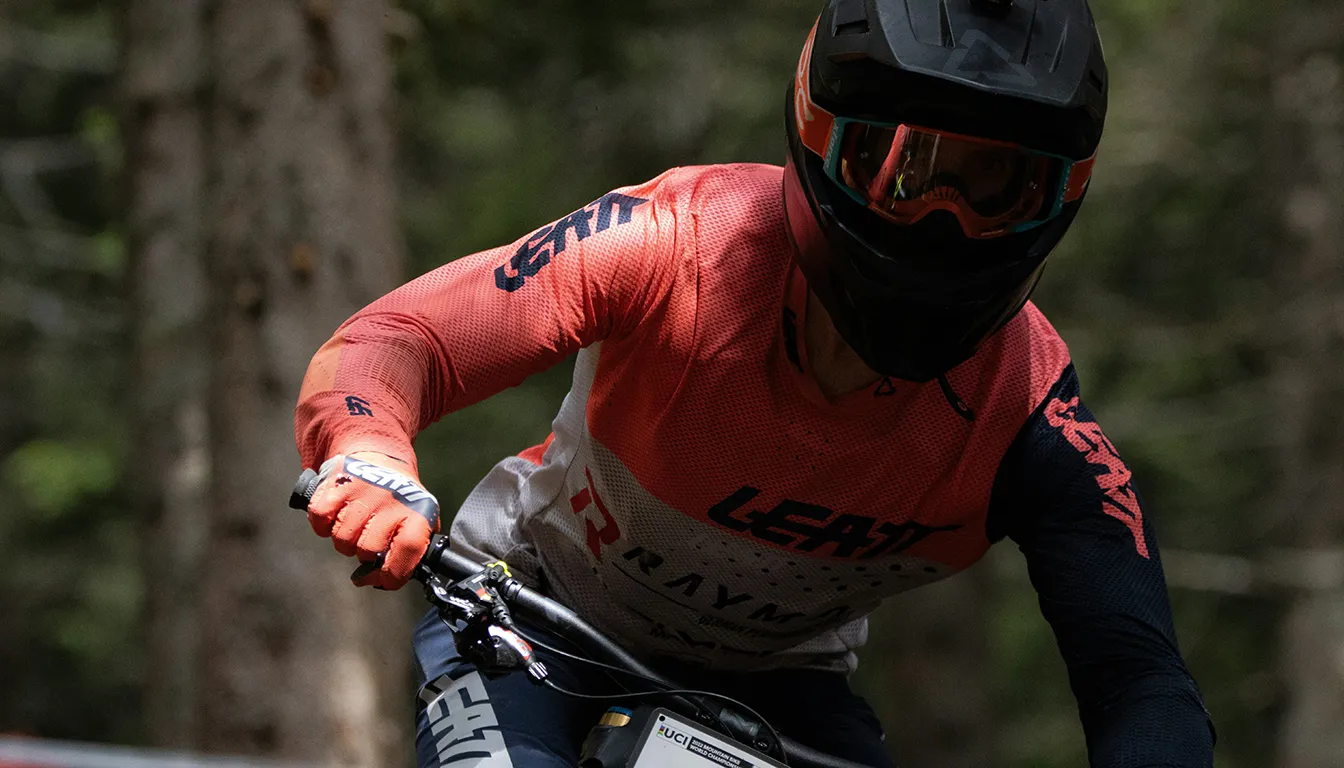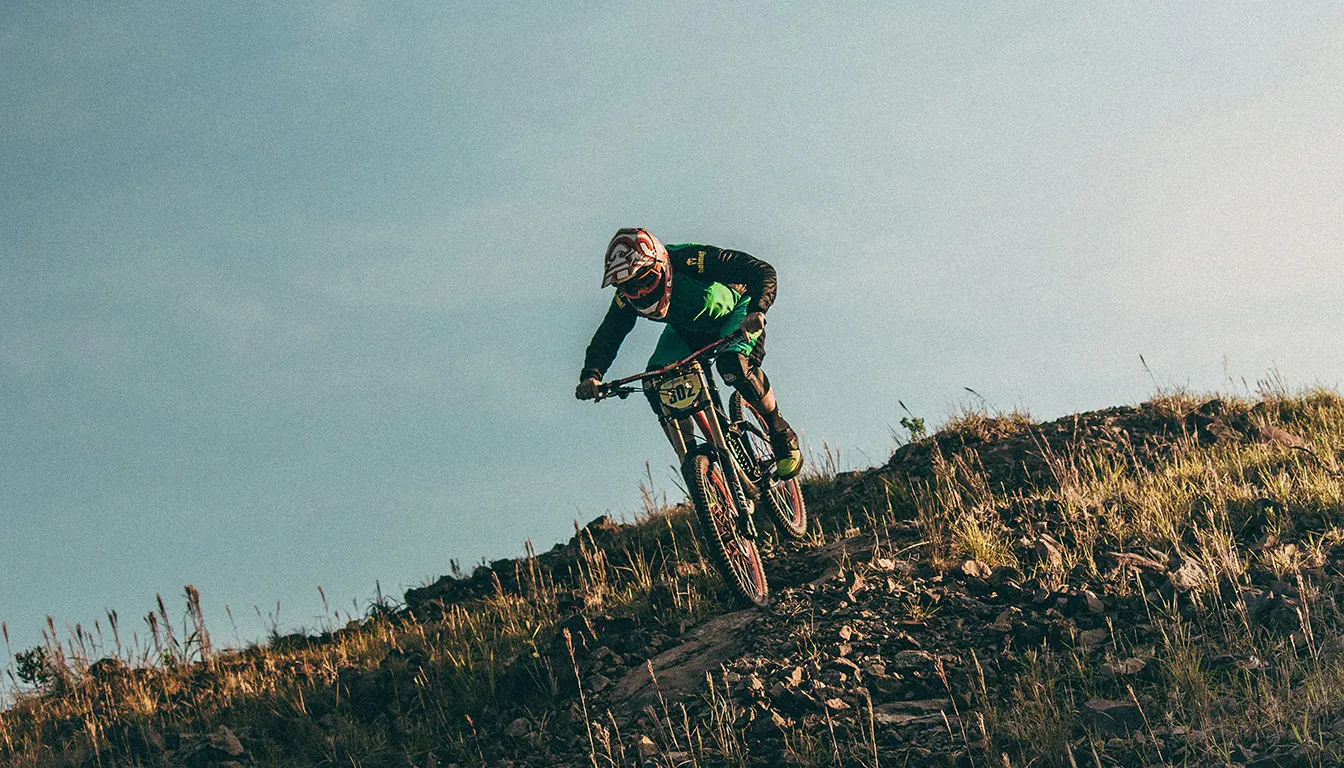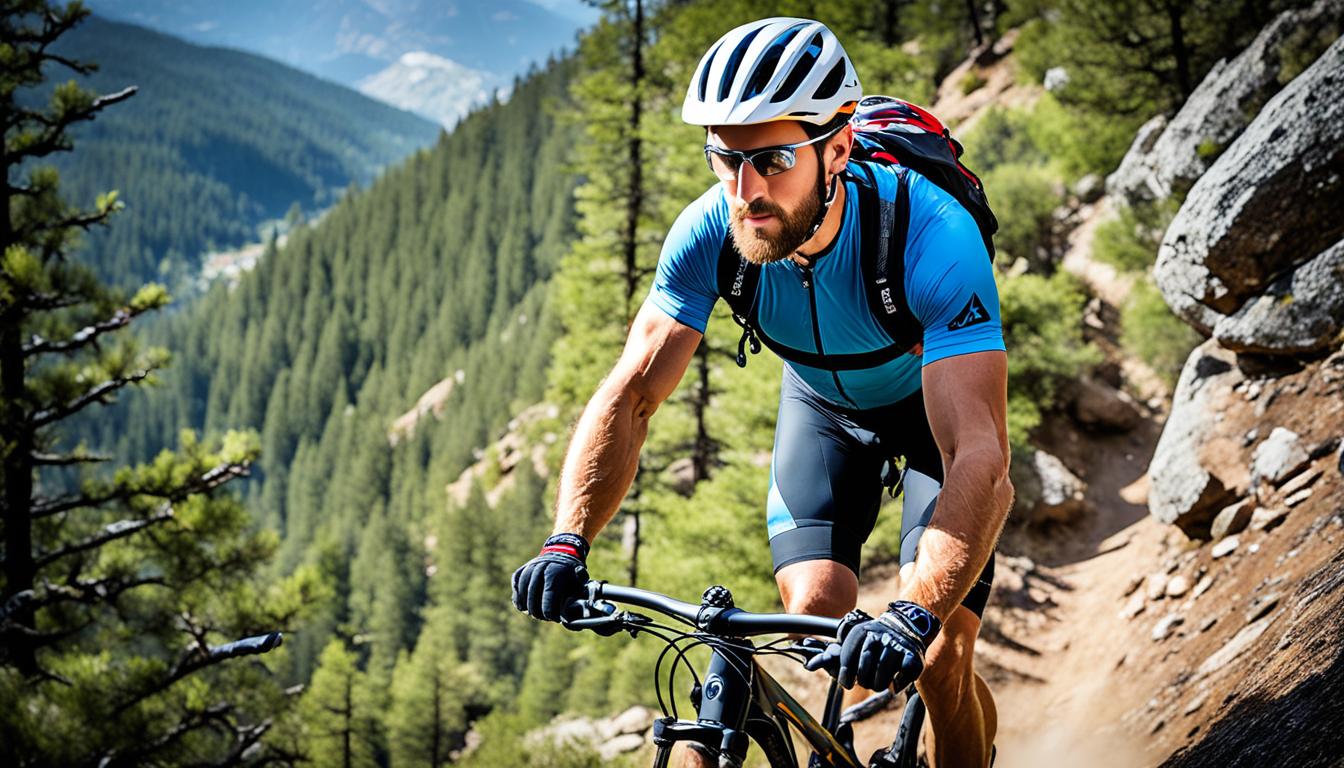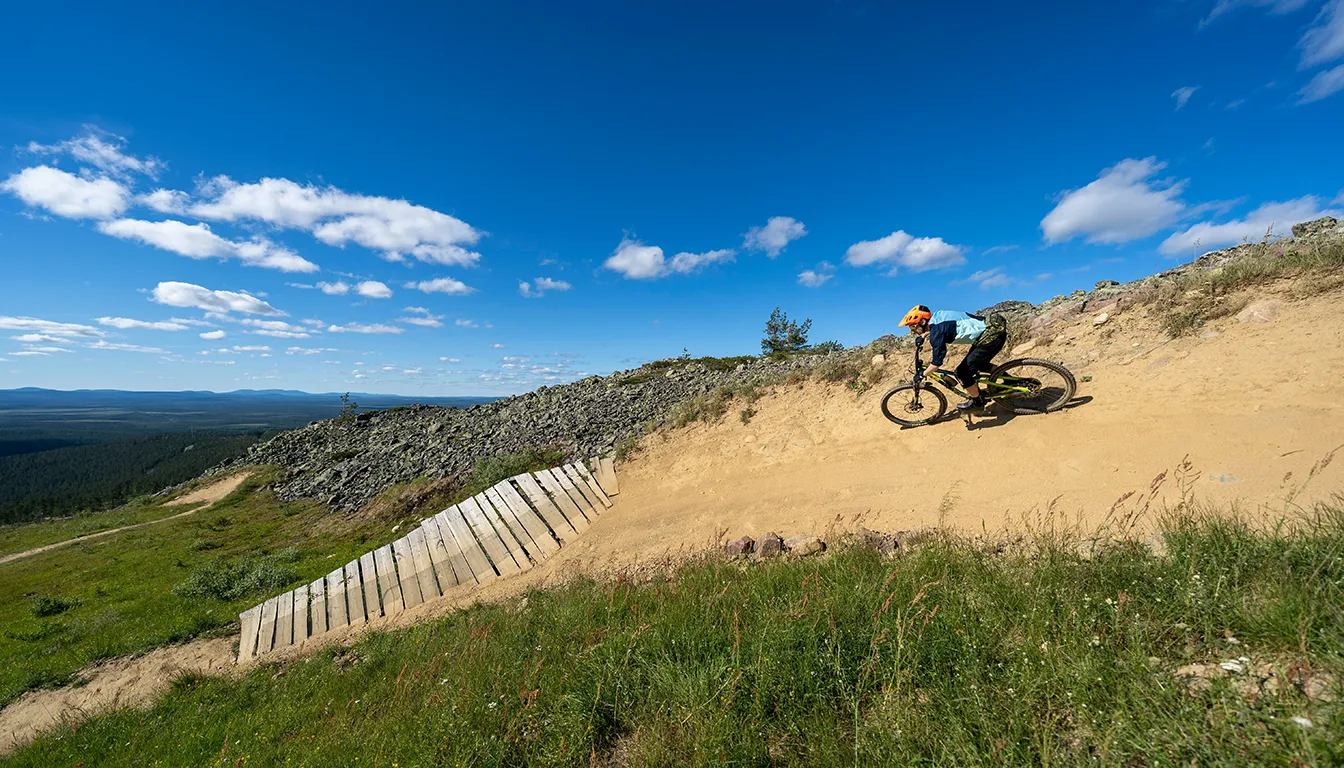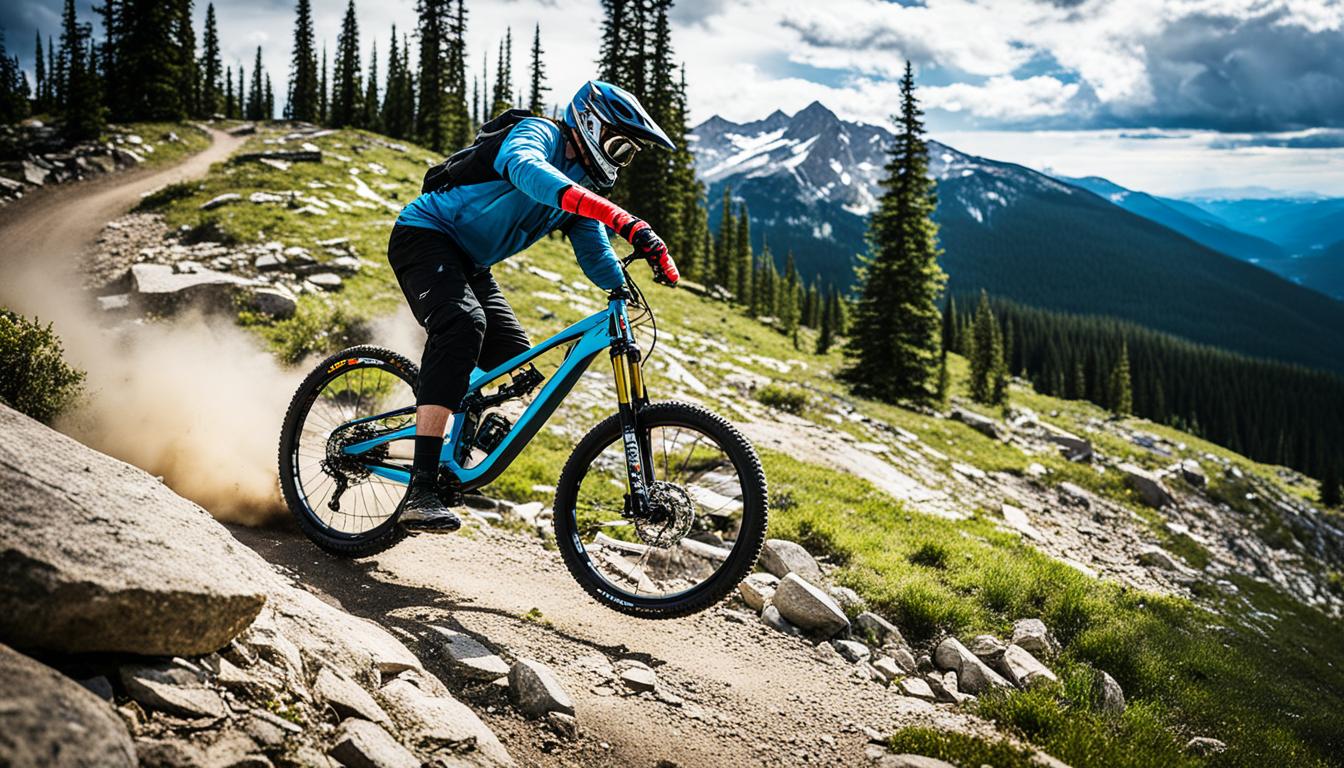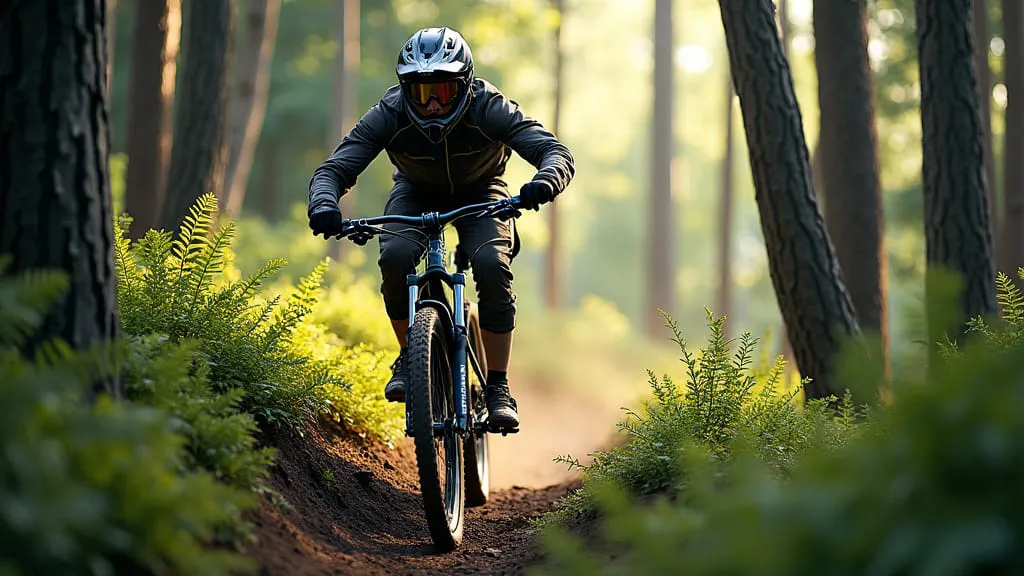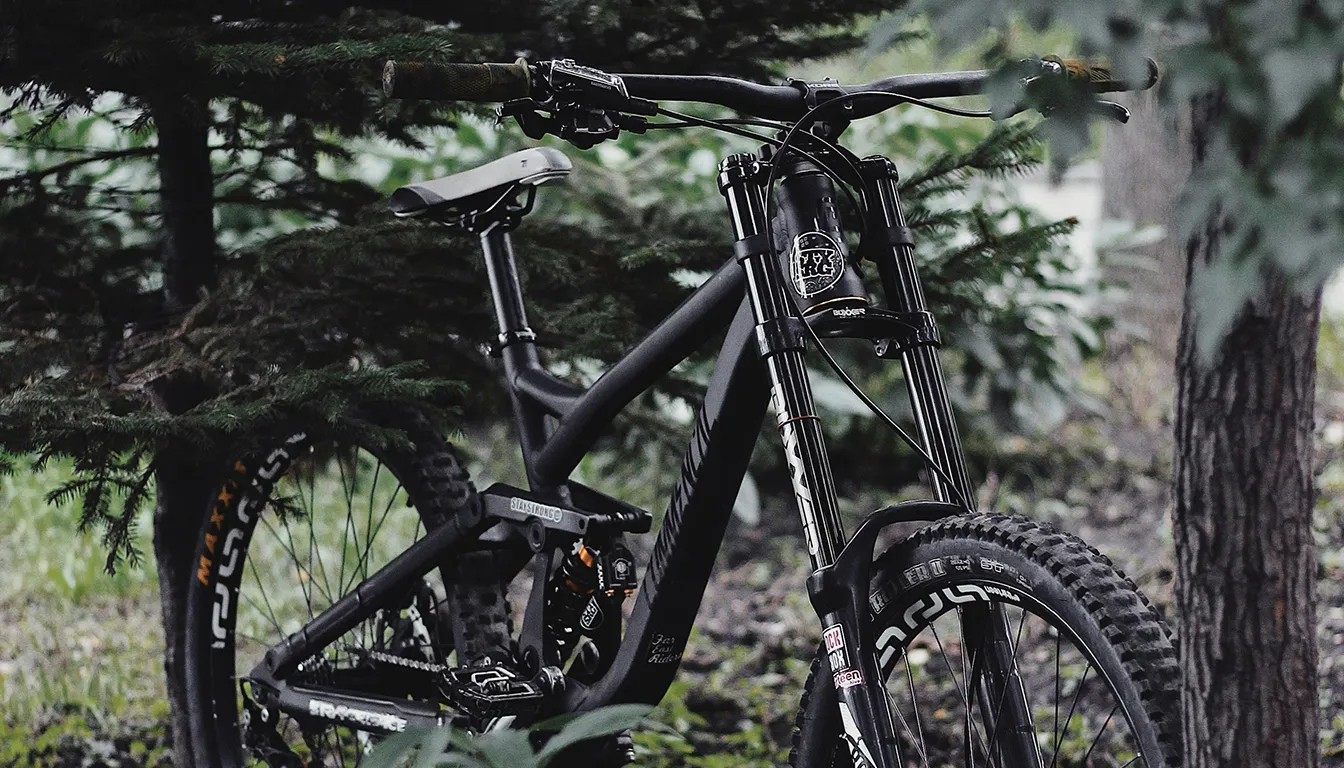Downhill mountain biking is exciting but requires more than speed and fitness. It needs mastery of technical skills and effective bike handling. To get better, mix various techniques and strategies into your cycling routine. This approach helps when you’re going down steep hills or tackling tricky trails, making you a skilled rider.
To start improving, upgrade your bike with new MTB technology. Things like dropper seatposts and adjustable suspension make a big difference. They boost your confidence and comfort on tough terrains. Also, learning from seasoned riders or joining group rides can offer great mountain biking tips and support. This pushes you to hone your abilities in a friendly setting.
The Basics of Downhill Mountain Biking
Downhill mountain biking is a thrilling sport that began in the 1970s in California. Riders adapted their bikes for downhill races. This introduction to downhill biking shows a world full of excitement and challenge.
Knowing the mountain biking fundamentals is crucial. Downhill races are short, lasting three to five minutes, and include jumps and rocks. Riders aim for the fastest time in these races.
Racers get one chance to make their mark in each race. They need UCI points to compete in the UCI MTB Downhill World Cup. Wearing full-face helmets and protective gear is vital for safety.
Downhill biking requires many skills and constant practice. Riders need to stay focused, dodge obstacles, and keep calm to control their speed. Learning to handle drop-offs and brake correctly is important.
Downhill biking combines technical skills, fitness, and a love for adventure. With practice and the desire to get better, riders can really enjoy this sport.
Understanding Your Bike Setup
A proper bike setup is key for top performance in downhill mountain biking. Bike size, tyre pressure, and suspension need careful tuning for stability and handling. Getting it right means a comfy ride and better control, which helps you ride better.
Adjusting your bike for downhill is about matching it to your shape and how you ride. The right tyre pressure helps with grip and how the bike feels. This balance boosts your confidence on tough trails. Beginners should consider bike setup courses to get the most out of their gear.
Suspension is crucial too. Adjusting sag, rebound, and compression helps with steadiness on steep drops. A good setup lets the bike soak up bumps for a smoother ride and keeps you moving fast. Plus, knowing how to stand and move on the bike makes a big difference.
Keep checking and tweaking your bike setup to keep getting better. As you get more into downhill biking, you’ll see how vital these adjustments are. They make riding more fun and help you succeed on the trails.
Essential Techniques for Downhill Mountain Biking Skills
Getting better at downhill mountain biking involves learning important techniques. It’s crucial to know how to position your body. Doing so keeps you stable and in control. Also, knowing when and how to brake is essential. It keeps you safe and helps manage your speed on steep paths. Let’s explore the key skills of body positioning and braking.
Body Positioning on the Bike
For downhill biking, your body’s position is key:
- Maintain a centred stance over the bike, balancing your weight equally.
- Always look ahead to plan your next move.
- Keep your knees and arms flexible to soak up bumps and respond to obstacles.
- In turns, press your outside foot down and lean the bike to improve grip.
Experiment with different body positions when riding various trails. Lean back when going downhill and shift forward when climbing. Mastering these skills makes biking both safe and fun.
Braking Techniques and Modulation
Braking right is a big part of downhill biking. Managing your brakes well helps you stay in control:
- Always use both brakes together to stop evenly and safely.
- Get the feel for gentle braking to keep a smooth ride.
- On uphill climbs, use lower gears and brake gently on downslopes to control speed.
Keeping a balanced posture while braking is important. Lean back a bit when going downhill. This action helps you handle the bike better against the force of braking. Training yourself to use your arms and legs like shock absorbers is key for tackling obstacles.
Combining the right body position with proper braking lays the groundwork for good downhill biking. Practising on various trails improves these techniques. This lets you enjoy your rides more while staying safe.
| Technique | Description | Benefits |
|---|---|---|
| Body Positioning | Maintain a centred stance, shift weight as needed | Improved stability and control |
| Braking Techniques | Use feathering and modulation effectively | Enhanced speed management and reduced skidding |
| Obstacle Handling | Use arms and legs as shock absorbers | Better reaction to terrain changes |
Improving Your Physical Fitness for Mountain Biking
Being fit is key to doing better in downhill mountain biking. Combining strength exercises and other training methods improves stamina and skills. It’s helpful to work on your core, arms, and legs. This builds the muscles needed for tough trails.
Strength Training Exercises
Mountain bikers need good strength training exercises. Adding these to your plan will boost your fitness for biking:
- Core Strength Exercises: Planks and Russian twists are top picks for a solid core.
- Leg Workouts: Squats and lunges make your legs stronger, helping you pedal harder and climb better.
- Upper Body Training: Push-ups and kettlebell swings increase arm strength for bike control.
- Kettlebell Training: A favourite among pros, kettlebells mimic riding on rough ground.
Cross-Training for Better Performance
Add cross-training to your routine for a big boost in biking skills. Trying sports like swimming, road cycling, or running builds fitness and flexibility. These activities fight tiredness so you can bike longer and with more power on trails.
Running, for example, works fast twitch muscles, which biking alone might not do. A varied workout plan tackles different skills and lessens injury chances. Mix tough sessions with easier ones for recovery and steady progress.
Building Confidence on Technical Trails
Exceling in technical trail riding requires a lot of confidence. Facing tough terrain is scary at first. But, with the right method, you can master biking challenges. Start by understanding your skills and what frightens you. Knowing this helps you plan how to get better.
Practising difficult sections helps a lot. Spend time on hard parts, breaking them into easier steps. Picking the right path helps keep control and flow. As you beat each challenge, your skills grow. Soon, scary trails become easier.
Being mentally ready is key to feeling confident. Get to know the trail before you ride it. Imagine yourself doing well on hard parts. This changes how you see challenges, making them seem less scary. With time, you’ll get better at tough trails faster.
Use basic drills to better your training. Working on balance and bike control helps improve skills. Getting coaching for areas like cornering offers custom tips for your style. This tailored advice is very helpful.
Practicing these tips can make your rides smoother and quicker than you think. Riders often find they do better after using these strategies. You can ride down hills faster and speed up with more confidence.
Keep using these techniques and challenge yourself more and more. This turns technical trails into chances for growth. You’ll not only ride better but also enjoy biking more.
For more help, check out this resource on tackling technical mountain bike terrain.
Conclusion
Mastering downhill mountain biking is a journey that requires effort in several areas. Improving your bike handling, getting the right body position, and learning how to brake properly are key. These skills greatly boost your ability on the trails. Also, being fit is crucial for this sport.
Strength training and cross-training are important to build endurance and strength. This makes tackling the demands of downhill biking easier.
The mental side of mountain biking is just as important. Feeling confident on challenging trails reduces stress and improves how you perform. By practicing regularly and staying resilient, your biking will get better. As competitions become more popular, it’s key to keep pushing yourself and enjoy the ride, no matter your skill level.
Adding activities like skiing, road cycling, or swimming to your training helps too. These ensure a balanced approach to improving your biking skills. With steady effort and a positive attitude, every rider can experience the excitement of downhill biking and aim for new heights.
FAQ
What are the key skills needed for downhill mountain biking?
To do well in downhill mountain biking, you must master a few skills. These include bike handling, understanding the track, and being physically fit. It’s also vital to know how to position yourself, brake properly, and keep balanced.
How important is bike setup in downhill mountain biking?
Getting your bike setup right is crucial in downhill biking. The right bike size, tyre pressure, and suspension settings improve your performance. They also make you feel more stable and confident. If you’re new, getting help from a pro to set up your bike is wise.
What techniques should I focus on for better performance?
Focus on certain techniques to perform better. Proper body positioning, braking right, and dealing with obstacles by balancing your weight are key. Also, looking ahead and keeping your knees and arms in the right spots help a lot. These improve how well you ride and keep you safe.
How can I improve my physical fitness for downhill biking?
Boosting your fitness means working on your core, arms, and legs strength. Try cross-training too, like swimming, biking on roads, or running. These activities boost your overall fitness and agility. This makes you better at biking and increases your endurance.
What strategies can I use to build confidence on technical trails?
Gain confidence on tricky trails by practicing difficult bits, trying different paths, and pushing yourself bit by bit. Being mentally ready and knowing the trail helps too. This improves your confidence as you face harder routes.
Can anyone improve their downhill mountain biking skills?
Yes, with dedication and practice, anyone can get better at downhill biking. Using the techniques in this guide and practicing often make a big difference. Loving biking also plays a big part in improving your skills, no matter your start point.
